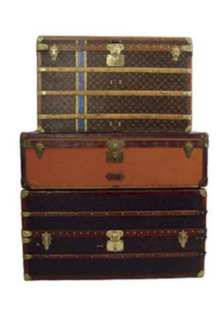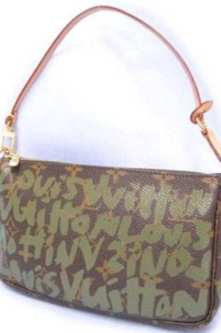
Louis Vuitton Luggage
These days a celebrity at an airport without a piece of Louis Vuitton luggage is about as rare as Amy Winehouse without a fag and a bottle of booze. But it's not just modern day stars that appreciate the world's most stylish fashion accessory- the popularity of LV luggage goes back well over a century. Female First look at the story behind this icon of luxury travel.
Louis Vuitton, the founder of the fashion house, was a French 'Malletier' – or trunk maker to me and you- in the second half of the 19th century. He started out as an apprentice at the age of 16 and then in 1854 he opened his own store in Paris on Rue Neuve des Capucines simply named 'Louis Vuitton Malletier a Paris.'

For many years that is exactly what Louis Vuitton was- a trunk maker. He made the first travel trunks that had a flat top to make them easier for stacking and soon became popular with socialites and explorers alike. Famous explorer Pierre S De Brazza even used specially commissioned LV trunks made of insect repellent wood during his journey through the Congo in 1905.
In 1896 the company launched the Monogram Canvas- for which it is most famous today. It's graphic symbols, including quatrefoils and flowers, were based on the trend of using Japanese and Oriental designs in the late Victorian era.
The modern day Louis Vuitton handbag emerged from the 1901 Steamer Bag that was designed to go inside the luggage trunks.
In the 1920s during the British occupation of India the Maharajah were among the wealthiest people in the world and they loved to travel in style. Louis Vuitton's ability to adapt and customise their luggage to suit individual customers made them very popular with these rich leaders and Maharajah De Baroda even commissioned the fashion house to design a trunk especially to hold his favourite china tea set.

By the 1930s Louis Vuitton luggage had grown into a huge status symbol and just about anyone who was anyone owned a piece from the range. In order to broaden its line, the company revamped its signature Monogram Canvas to make it more supple, allowing it to be used for purses, bags, and wallets.
Twiggy was the most popular model of the 1960s and her jet set lifestyle led to the creation of the infamous Louis Vuitton Papilion. It's cylinder shape and easily portable size made it ideal for a model on the go and after Twiggy appeared in Vogue with the bag in 1967 the world went crazy for the Papilion- to this day it is still one of Louis Vuitton's most popular bags.

In 1997, Louis Vuitton hired Marc Jacobs to be the label's artistic director and in March 1998 he designed and introduced the company's first prêt-à -porter line of clothing.
The classic Louis Vuitton canvas has always been brown with a gold LV monogram all over and can be spotted easily by all fashion lovers. However the last few years has seen this iconic design go through a series of re-vamps.
In 2001, Stephen Sprouse, in collaboration with Marc Jacobs, designed a limited-edition line of Vuitton bags that feature graffiti written over the monogram pattern. Certain pieces, which feature the graffiti without the Monogram Canvas background, are created and only available to the customers on Vuitton's V.I.P. customer list.

In 2003, Takashi Murakami created the new Monogram Multicolore canvas design. This range includes the monograms of the standard Monogram Canvas, but in 33 different colors on either a white or black background.

So there you have it- whether it be Paris Hilton boarding a flight to LA with a dog in a tutu under her arm, a Mahajaraja carrying his tea set around the world or an explorer deep in the jungles of Africa Louis Vuitton luggage is always close to the heart of those who own it and well deserves it's place in our fashion icons hall of fame.
Caz Moss- Female First

